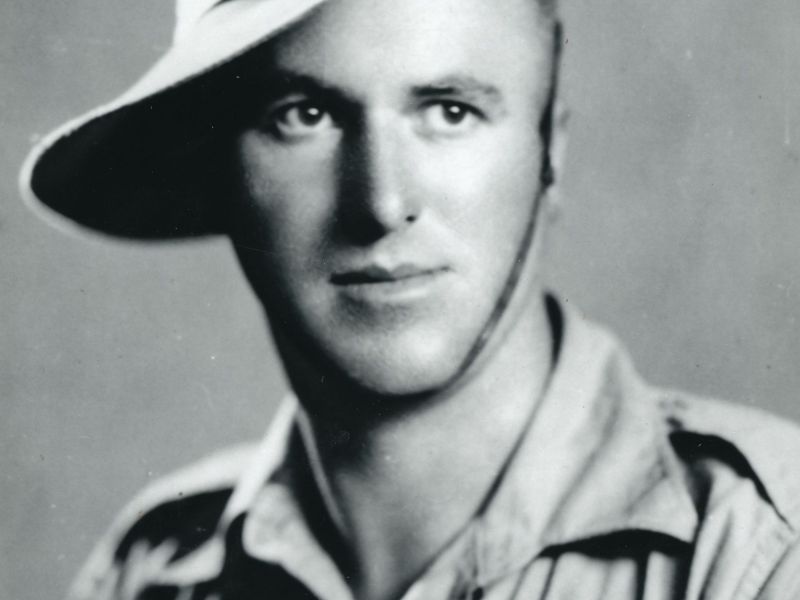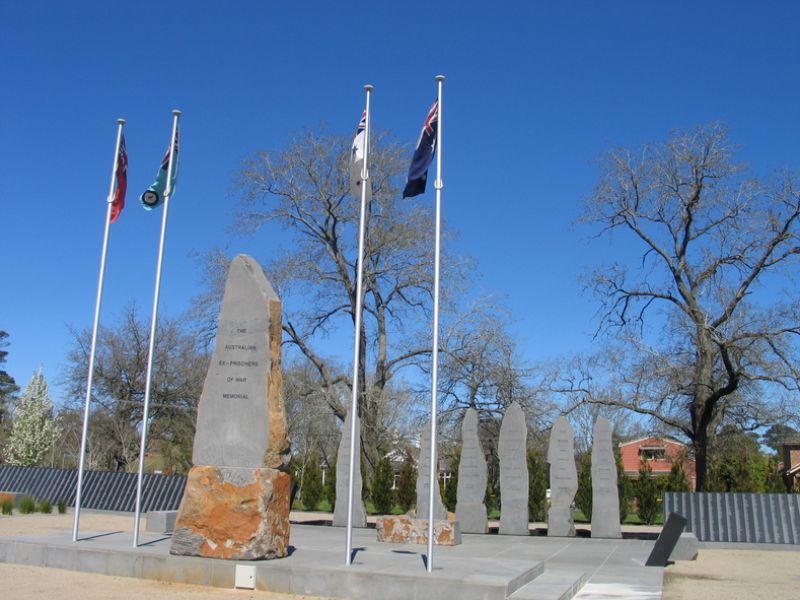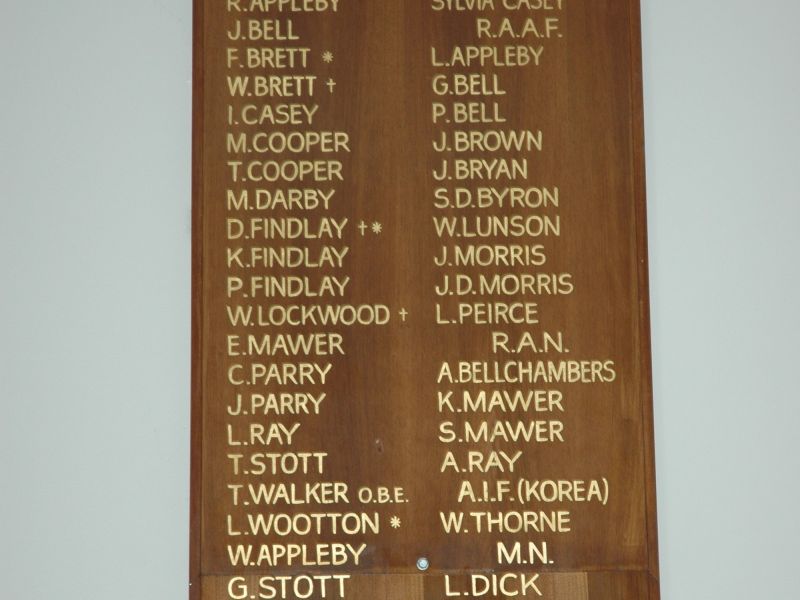Dick Ronald Findlay
Dick was born on the 5th of December, 1918, at Davenport, Tasmania. He was the third of five boys born to McGregor and Amy (née Casey) Findlay. The family lived at Wesley Vale, about eight kilometres east of Davenport, where McGregor had employment as a labourer.
Prior to enlisting in the regular forces, Dick was a Private in the A.M.F. (Australian Military Forces). Units belonging to these forces consisted of conscripts and volunteer militiamen. In 1941, on the 29th of July, he enlisted in the A.I.F. at Burnie in Tasmania. He was allocated the Army Number TX5648 (the “T” referring to the State in which the recruit enlisted, in this case Tasmania) and posted to the training camp at Brighton, 28 kilometres north of Hobart. Brighton had a long association with the military, there having been a military post at the town since 1826. This presence would last for 170 years.
Dick would remain at Brighton Camp until early 1942. Whilst stationed here, he went on two short stints of non-approved leave. In both cases he was charged with being A.W.O.L. (absent without leave). The first time was for a period of three days. As a consequence he forfeited three days pay. The second time was only for one day, hence the “award” of forfeiting one day’s pay. Early in December he was posted to the 14th Reinforcements for the 2/43rd Battalion. By the middle of the month he and his unit were posted to Darley Military Camp, near Bacchus Marsh in Victoria. Early in the new year Dick was transferred to the 6th Reinforcements for the 2/29th Battalion. Not long after that he embarked on HMT “MS” for overseas service.
The 26th of January saw Dick disembarking at Singapore, the troopship having sailed via Batavia (present day Jakarta). It’s not known if Dick and the rest of the 6th Reinforcements ever connected up with the remainder of the 2/29th Battalion. In late January they were in defensive positions at the village of Simpang Renggam, over 50 kilometres north-west of Singapore Island. Dick must have seen some action as his service records indicate that he was admitted to the 2/10th Field Ambulance, and then the 2/4th Casualty Clearing Station, with a wound to the head. It was while he was here that the Allied Forces in Singapore surrendered. Two days after the surrender he was transferred to the 13th Australian General Hospital.
Dick had just joined the ranks of the 80,000 British, Indian and Australian troops made prisoners of war of the Japanese. His service records indicate that he became a member of Force F whilst a POW. Force F was one of the last labour forces to leave Changi, Singapore, in mid-April of 1943. It consisted of 3662 Australians and 3400 British. Initially packed into metal railway trucks (that had no ventilation) with little food and water they moved to Ban Pong in Thailand. It was then forced to march over 300 kilometres to camps near the border with Burma (now Myanmar). As the railway progressed the prisoners moved between camps. Assuming that Dick stayed with F Force, he would have moved through the following camps; Konkoita, Shimo Ni Thea, Shimo Songkurai, Songkuri, Kami Songkurai and Tha Khanun.
In Leslie Hall’s excellent book on POWs experiences on the Burma Railway, “Blue Haze”, Corporal Tom Fagan (VX47533) recalls meeting members of F Force as they moved along the railway. Such were the conditions that Dick encountered.
“Last week a large group of ‘F’ and ‘H’ Forces, Thailand, came past our camp [105 Camp - 105 kilometres from the start of the railway]. They had been on the road for days. They had covered 150 miles by the time they got here. Now on route to a site 50 kilometres away. They were, so we were told, all very sick men heading for a hospital camp.
They comprised English and Australian; sixteen had died on the trip from the diseases rampant in this hell-hole. Throughout the long journey the guards had refused them any type of vessel to boil water. The result, they drank from any stream they came to; many contracted cholera, hence the terrible death rate.
Suppose I got a bit excited when I heard there were Aussies from the Thailand side passing our camp. I felt crook, but I struggled out and was able, by dodging the guard, to speak to one of the Australians. He told me, shudder when I think of it, 92 (all Aussies) passed away in two days at the 130 kilo camp. As applies here, no medicine or drugs supplied.
Not one was buried.”
On the 10th of July, 1944, Dick died of cardiac failure as a result of illness. The malnutrition, dysentery and many other illnesses contracted by POW’s of the Japanese would have played a large part in Dick’s death. He was originally buried in the Changi AIF Cemetery in grave number 137. This shows us that he had survived the trials and tribulations of the Burma-Thailand railway only to die back in Changi. After the war, on the 20th of April 1946, his body was exhumed and reburied in the Kranji War Cemetery in Singapore.
He is also remembered on the Australian War Memorial Roll of Honour, Ballarat Australian Ex-Prisoners of War Memorial, the Wesley Vale Memorial Rose Garden, the Wesley Vale Second World War and Korea Roll of Honour and the Labuan Memorial on the island of Labuan. For his service, he was awarded the 1939-1945 Star, the Pacific Star, the Defence Medal, the War Medal 1939-1945 and the Australian Service Medal 1939-1945.

 Stephen Learmonth
Stephen Learmonth
